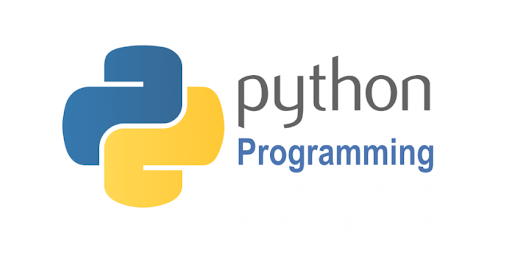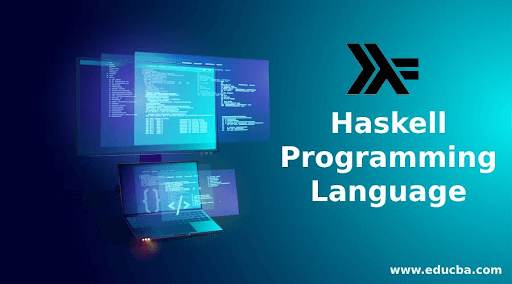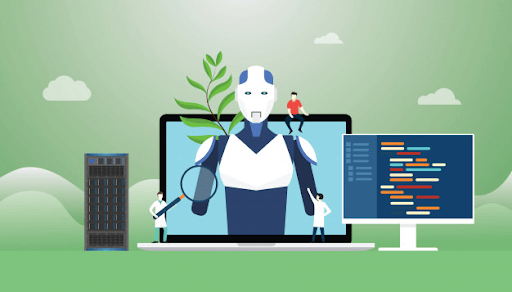The development of technology has turned out to be a boon in every field, be it education, business, medicine, communication, etc. The growth is to that extent, where it is possible to control almost everything with technology, but not THE TECHNOLOGY.
Could we have ever imagined that a machine can talk, walk, and act like any man? Above all, the one aspect that makes a man a rational being is his ability to think. But today, machines can mimic the human brain, all because of the Tech improvement. This expeditious growth of technology has also given rise to the most unexpected, i.e., the Artificial Intelligence.
Artificial Intelligence, often referred to as AI, in short, can be understood as enabling computers to act and think like humans. The computers are programmed to function similar to humans. It simplifies the tasks and makes life more comfortable to live and work. AI assists in boosting the quality of the product, increase in consumption rate, productivity, and most of all, drastic gain in financial services.
Check about the: AI websites
Considering the benefits of AI, many organizations have begun to adopt digital solutions to get the basic and monotonous tasks done in a few clicks. With the power of artificial intelligence, the best HR management software can reduce time consumption and errors occurring in the salary process, recruitment, performance evaluation, and other operational decisions.
Top Programming Languages for AI
LISP

Image source
The name LISP stems from the “LISt Processor.” LISP, a family of programming languages, is very distinctive and has a long history. It is a fully parenthesized prefix notation. Originated in the year 1958, LISP is the second-oldest high-level programming language in extensive application today.
Lisp hasn’t remained the same since then. It has experienced a large amount of evolution over the years. The most familiar purpose of LISP dialects is Racket, Common Lisp, Scheme, and Clojure.
Lisp was built as a practical mathematical representation for computer applications and was influenced by the notation of Alonzo Church’s lambda calculus. It instantly became their preferred programming language for AI.
Know more: How the Application of Artificial Intelligence Assists Businesses?
As the earliest programming languages, Lisp established many computer science ideas, including automatic storage management, dynamic typing, higher-order functions, recursion, tree data structures, and many more.
Linked lists are Lisp’s major data structures, and Lisp source code is made of lists. Thus, it can handle source code as a data structure, giving rise to the macro systems that allow programmers to create a new language or new domain-specific languages.
Lisp is considered a spontaneously recognizable syntax because of its code interchangeability. All program code is written either as “s-expressions” or parenthesized lists. Firstly, a function call or syntactic form is recorded as a list with the function name or the operator’s name. And then, the arguments follow. Example: A function ‘k’ that takes three arguments would be called – (k arg1 arg2 arg3).
Python

Image source
Python is one of the undeniable leaders among AI programming languages. Its outstanding features, such as simplicity, flexibility, and scalability, have paved the way for its comprehensive utilization in many industries.
First of all, Python is open source. It means that it is available for any modifications developers see necessary. It constantly keeps developing, shaping its language easier, which contributes positively to its competence.
And then, there is a considerable number of ready-made libraries that help stimulate AI coding. For example, in machine learning and for working with datasets, TensorFlow is widely used; for training machine learning models – scikit, and so on. Thus, it helps accelerate development and save funds because of its substantial advantage, as it assumes applying ready-made resolutions instead of creating from scratch.
Ultimately, Python is an independent platform and blends very well with other AI programming languages.
See more: Artificial Intelligence: Expectation and Reality
Python is a reliable choice despite the project or the industry size. It can efficiently cope with scripts and easily help the industry applications.
Java
How can we not discuss the best programming language for AI without concerning the object-oriented programming language? It’s Java. Ever since it emerged in the year 1995, Java has evolved to become a highly compact and lucid language that gets support from the library’s wealth.
Java is highly user-friendly, easy to debug, and operates across platforms without engaging in any additional recompilation. All because of its Virtual Machine Technology, which allows the code to operate on all Java maintained platforms.
Talking about it’s functioning with NLP, it’s obvious to find ample support from the passionate community that’s grown around it. Enabling seamless access to big data platforms like Apache Spark and Apache Hadoop, Java has plastered its place within data analytics-related AI development.
R

Image source
One of the most significant languages and environments for examining and manipulating the data for analytical purposes is the programming language called as R. It’s especially good at crunching large numbers, even better than Python.
Kaggle’s recent survey says that R often comes as the first choice for software that uses a lot of statistical data with the use of R, it is easy to produce a well-designed publication-quality plot, including the mathematical symbols and formulae wherever you find the need.
Apart from being a generally used language, R has numerous ensembles like Gmodels, Class, and Tm, used in machine learning. These combinations implement machine learning algorithms easy for deciphering business-related problems.
Haskell

Image source
In 1990 a regulated strong static typing language was developed with non-strict symbolism known as Haskell.
Firstly, academic circles were the primary concentration, and Haskell did gain its reputation. Big techs like Google, Facebook, and many others are also widely using this programming language. In recent days, its application is also found in projects as it supports domain-specific languages, playing a major role in AI and its research.
Haskell, unlike Java, is perfect for engaging in abstract mathematics, as it allows expressive and efficient libraries to create AI algorithms.
Haskell maintains an acceptable performance level while coding the algorithms in any AI language, making it more expressive than the other languages.
Prolog – Programming languages for AI
“Programming in Logic, ” familiarly known as Prolog, is another old and the best AI language. Mechanisms such as automatic braking, pattern matching, etc., are the few basics of this programming language.
It was introduced by a scientist named Alain Colmerauer in the year 1970. In this programming language, the rules, facts, and the end results are to be specified by the programmer. Once done, the Prolog will try to identify the connection between the above-mentioned three.
Read more: Top 10 Platforms To Create Your Online Service App Without Coding
Functioning this way is very unusual, but that‘s how Prolog functions with its own advantages as well as its limitations. With this programming language, it’s easy to build data and match the patterns as it has in-built handling for tasks such as these.
C++
In the year 1983, Bjarne Stroustrup was the one to develop C++. Today it holds the privilege of bearing the title “fastest programming language.” Time is vital for AI projects, and C++ is the typical choice when it comes to time.
In order to have less reply time and for the development of computer games, the search engines take advantage of C++ for quick execution. C++ was originated with a preference toward system programming, resource-restrained software, and large systems, with execution, competence, and versatility of use as its design highlights.
Conclusion:
By now, we must have realized the importance and potential of AI languages and the large number of opportunities it can bring to us. But somehow, the choice of which programming language you want to use depends on many factors such as – the specifics of your business, the issue that you want to resolve or simplify, the product, new or already existing, nature of the market, the customers or users, and ultimately the goals.
This is because each need is different, and the solution for the same is unique. Therefore, take enough time to research and analyze which issue you want to address and which programming language will suit it better.
We hope you liked the article on “programming languages for AI“, if you have any more ideas then please share with us.
Author bio:
Divyang Metaliya is a Business Consultant. Apart from managing and improving business processes, his hobby is spreading his vast area of knowledge to the people out there. He loves to create content that is innovative and engaging for the readers.

